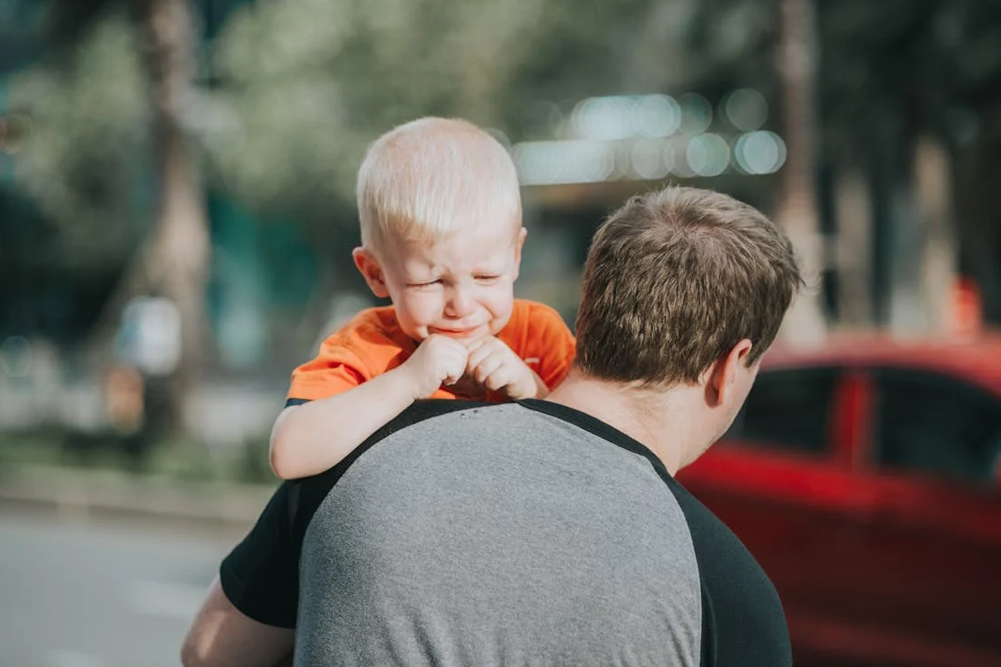Panic in children is often a mystery for many. It is important to support our children when they are stressed-out. Our understanding of what panic is, why it happens and how it affects our children can help us to support our children overcome these issues.
Panic creeps up on us as adults jostling between career, jobs at home, bills to pay and endless activities to organise. Sometimes is may feel easier to go back to the simpler times of being a kid ourselves. The truth is, it may look easier in hindsight, but childhood actually comes with constant challenges for our kids to deal with emotionally, physically and mentally. Anxiety disorders are the second-most common mental disorder affecting our children between the ages of 4 and 11. The most common is attention deficit hyperactivity disorder or ADHD.
Panic and Anxiety – what are they?
Panic, whether it be in adults or children, is a survival instinct and something we all experience in some form. It is a device in some ways to warn us of danger and keep us ‘safe’. Feelings of not being safe lead us to ongoing constant panic from your perceived fears of the world in which we live.
Anxiety comes from the part of your brain, called the amygdala which senses danger. It sends your body into the fight or flight mode. Even if there is no real danger your body is flooded with extra adrenaline that has nowhere to go. This is when you will see symptoms like a racing heart, sweaty palms, dizziness and nausea. Panic happens sometimes when there is no real threat, but our body still reacts as if the threat is real. Our children are individuals, so an issue that may cause high anxiety in one child such as public-speaking won’t bother another child at all.
Anxiety disorders can also be caused by trauma, illness, grief, or simply not feeling safe or loved. Childhood is the time when we learn how to function and behave in the world around us. If children do not feel safe, loved, seen or appreciated, this can cause panic disorders.
Common anxiety disorders and panic in children
Generalised anxiety disorder is an excessive and ongoing high level of worry or irritation about things that might happen to a person or a loved one. An example is if they worry about how smart or popular a child is then the child can develop a lack confidence and constantly look for reassurance from those around them.
Separation anxiety disorder happens around the age of two. Children who have extreme fear or distress at the thought of being separated from their parents, so much that it leads to tantrums or crying. This is part of them discovering that they are a ‘different’ person to other people around them and becoming more aware of who they are as a person. Children with this disorder as they get older sometimes fake illnesses to avoid activities such as school and playdates. This is so they don’t get separated from their parents.
Post-traumatic stress disorder normally follows being witness to a violent event like an accident or assault. It can also come from an experience of high trauma, like a life-threatening situation. A child in a house with domestic violence or constant fighting may experience this because children interpret everything in different ways to adults. Children with PTSD can also experience flashbacks. They often recreate the event through drawings or at play, and have trouble sleeping or concentrating.
OCD and phobias in children
Obsessive compulsive disorder (OCD) can begin in late childhood. Studies show that this occurs when a child has recurring, persistent thoughts or images and impulses that are intrusive and unwanted. These become obsessions. Children with OCD perform repetitive actions that are excessive, time-consuming and distressing. There’s are compulsions. It could be about dirt or germs which can lead to over-washing of hands or where a particular item should sit on their desk.
Phobias can become a disorder when a child becomes exhausted by the thing that scares them. This may mean they’re unable to do things they would otherwise enjoy. Social phobia is when children experience anxiety and panic with other people. It may be hard to make friends or they avoid other people and become shy.
Why does my child have anxiety?
If there’s nothing obvious causing feelings of worry or high stress in your child such as an illness, death in the family or a traumatic event, try looking at how you feel and behave. Yes you. Your child might be picking up anxious signals from you or someone else close to them. Self-critical thinking may also lead to feelings of anxiety. If we continually tell our giggling children to stop and be quiet, then they may start to question if they’re allowed to be happy. However, that doesn’t mean we should feel guilty for our own emotional outbursts. Just remember that if you do say something when you’re angry or tired, to say sorry.
Helping your child with panic attacks and anxiety
Talking to your child about how they’re feeling and letting them know that you understand and are there for them, can help them feel supported. Also, let them know that adults can also have panic attacks and anxiety about things sometimes. This helps to normalise the feelings they are having and gives them permission to express them which is important. Talk about how you make yourself feel better when you’re anxious. This could be going for a walk, watching a funny movie, or talking to a friend. These can help them start to figure out ways they can feel better too.
If a child is visibly upset or distressed get them moving. Do things like jumping or run around. Distract them and make a game of it depending on their age. This will help them use up that extra adrenaline. Older children would benefit from breathing exercises or yoga, tai chi or learning to meditate as it will lessen their symptoms. If you are in doubt as to what to do there is lots of help around. Consult your natural therapist for natural ways to overcome anxiety and panic. Not only for your children but to help you with better tools for your own lifestyle.

